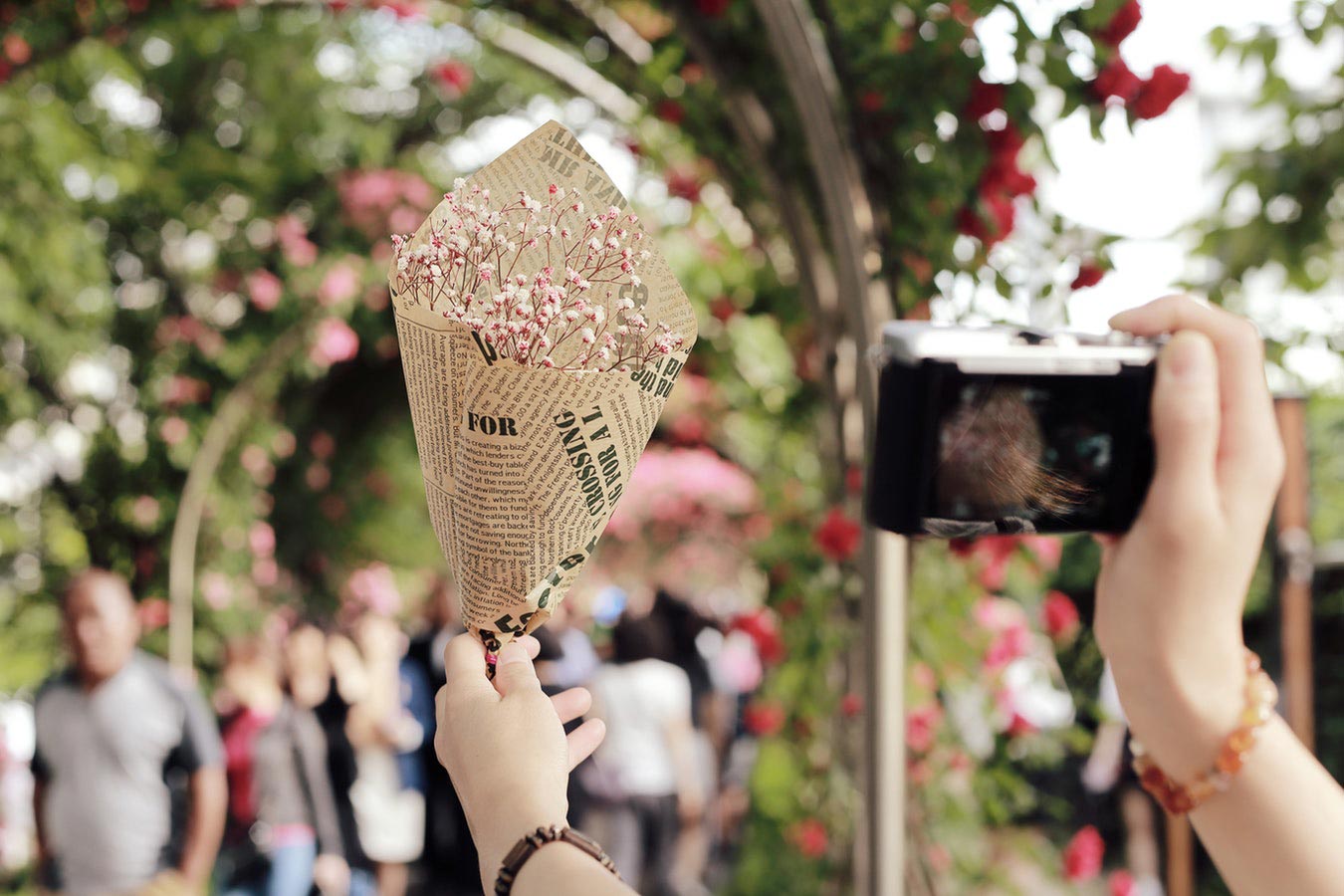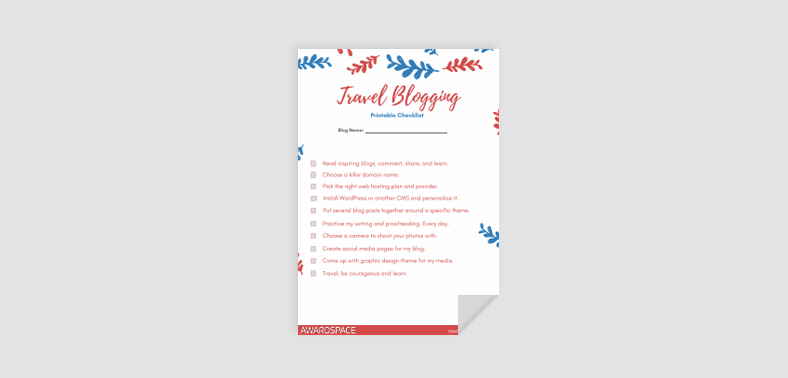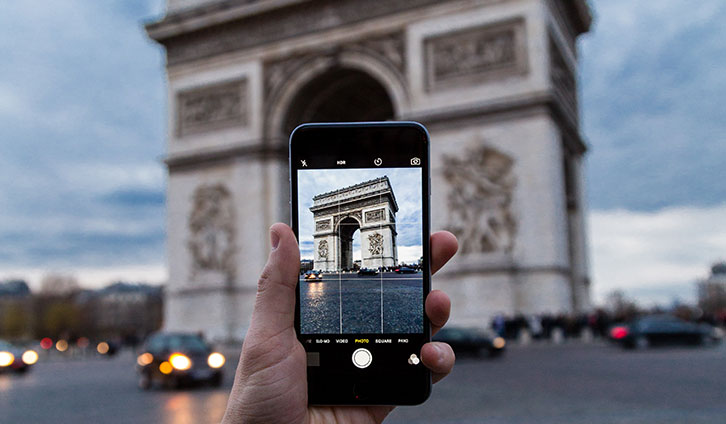A few decades ago people strived for a secure job, a steady salary, and a peaceful routine. Embracing the white-collar culture, little did they aspire to an independent profession or adventurous living.
As time passed and new concepts and views emerged in the world of employment, a certain word kept floating around: blogger. This mythical creature with no apparent superpowers or concerning somatic dichotomy, far from centaurs and mermaids, managed to captivate our interest and curiosity.
Being both independent and influential turned out to be a dream of many. Nevertheless, some undoubtful qualities are needed when undertaking this journey. And when it comes to travel blogging, the journey is quite literal.
Make sure to get familiar with our step-by-step guide to creating a personal website which will serve as a great introduction to the world of travel blogs and our travel blogging guide.
1. Develop a research strategy
Something most aspiring bloggers do not realize is the amount of work done behind the scenes. The research needed before you’re ready to kick-start a blog is incomparable to what most of beginners would expect.
The most important link in the chain is getting acquainted with the industry you’re striving to become a part of. To achieve it, spend time looking at different travel blogs. Find what you like about them and what you would do differently.

For example, some useful notes on the post structures, pictures, and information included could come in handy once you create your own website.
2. Choose a domain name and hosting provider
The backbones of construction usually remain in the marginal periphery of the interest of people. We usually tend to dive into wild creative dreams for our prospective travel blogging experience and forget the two essentials: domain and hosting provider.
When it comes to the domain, all the great ones are already taken. Nevertheless, if you are willing to get imaginative and clever, you might find the one that’s just right for you. The best practices when claiming a domain name include but aren’t limited to:
- choosing a simple easy-to-remember name
- picking a TLD suiting your content, location, or intention
- reserving it even before you’re ready to develop it into a blog
As for the web hosting provider, there are a number of factors that can inform your decision. The most important ones are your personal needs. For blogs, we highly recommend WordPress hosting as it offers just the necessary set of features and yet manages to remain on the cost-effective side.
3. Install a theme and customize it
Now that you’ve chosen your hosting plan it’s time to personalize your design. The design of the blog is a building block for the general user experience and making sure it fits your tone and topic is essential.
To install a theme, you can use the integrated theme search engine. Go to Appearance > Themes > Add New and choose from the options presented. All of these themes are either free or freemium. If you decide to go for a paid theme, you can do that by browsing some of the biggest WordPress theme websites such as ThemeForest and Template Monster.

Most probably, you will want to change something from the theme you install. To say the least, every website has a specific set of design features that you can adjust and customize. Learning how to customize your WordPress theme will allow you to realize most of your ideas easily and with minimum investment.
4. Come up with your voice and practice your writing
Any travel blogging guide is incomplete without a step regarding your voice as a blogger and a content creator. Every piece of content on the web has its distinct tone built into the writing style, the images, and the design.
As the concept voice is intrinsically associated with wording, your writing skills will need to bear the highest intensity of what you’ll later call your blogging voice. To polish those skills, it’s useful to have some handy writing tools that help you edit and proofread your texts.
Another important mediator for your style is the visual language you use. A photo is worth 1000 words and no one knows this better than your readers. As a travel blogger, taking care of the graphic presentation of your content is among your main responsibilities. This brings us to the next point.
5. Pick the right camera
Traveling is an extraordinary blend of different experiences. A significant part of those experiences is bound to our senses, especially our sight. That’s why a traveler can’t afford to miss the right shot and capture what was once perceived first-hand.

To capture a moment and share it on your blog doesn’t necessarily require professional equipment as many beginners fear. Of course, a nice DSLR camera does ensure a better and more professional overall quality of your visuals.
Nevertheless, learning some basic photography hacks could turn your iPhone into your trustful companion wherever life takes you. I’ve got to admit that recently authenticity has replaced the polished look so many of us thrived to achieve in the past.
A photo taken with your phone bears spontaneity and purity which DSLR cameras lack as you’d need to have prepared before taking a picture. That’s why the lack of professional equipment shouldn’t stop you from documenting your travels! On the contrary, it should serve as an inspiration to embrace your current status and grow in the future.
6. Go social
Today everybody and their brother is on social media. As a blogger, you’ll bear a certain responsibility to the internet community to keep your readers updated on any major events regarding your work.
Besides an additional channel of communication, your social media profiles could also drive traffic to your website. While their direct impact on your SEO is close to none, the indirect effects such as brand awareness and user engagement can go a long way.
Printable Checklist
After reading this Travel Blogging guide it’s time to take action and start creating what has been existing in your mind for so long. To make sure you do not miss any of the steps mentioned here, we’ve prepared a printable checklist.

Download the Travel Blogging Printable Checklist to keep your progress in track.
